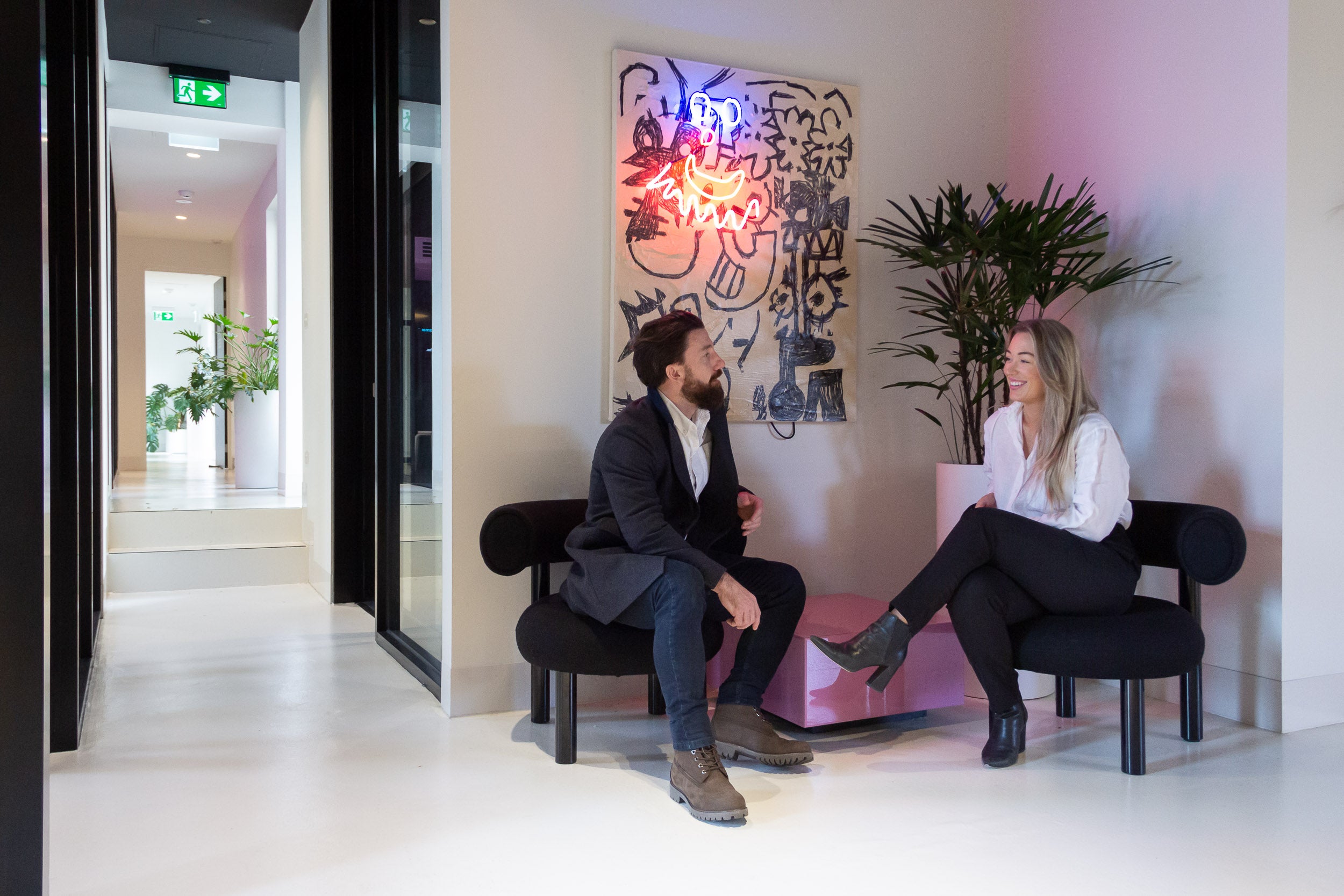Blog
The Importance of Social Media in Education Marketing – Part Two

With over 3.6 billion people using social media globally, the significance of this marketing channel is profound.
However, with limited organic targeting capabilities, reaching specific target markets can be difficult. This is where paid social media comes in.
To keep up with rising maintenance bills and company growth, social media platforms began to introduce advertisements in 2006, starting with Facebook and quickly followed by YouTube in 2007. Now, nearly all major social media players offer some form of advertising to brands, offering unprecedented access to niche, highly-engaged audiences.
With so many advertising options available to brands and the degree of technical knowledge required to successfully leverage paid ads on social media, it can be difficult to know where to start.
Understanding the intricacies of paid social media, such as the many technical terms and how to develop a paid marketing campaign from scratch can help to access this large audience of 3.6 billion social media users quickly and effectively.
This is part two; of our two-part blog series to arm education providers with the knowledge required to ensure they don’t miss out on this potentially lucrative marketing channel.
In this blog post, we’ll unpack:
What is paid social media?
Paid social media refers to a form of advertising in which brands pay social media networks to share their content with specific audiences.
With each social media platform operating its own unique advertising capabilities, there are many different advertisement and campaign types available to brands.
The paid social media landscape in 2021
The paid social media landscape experienced some turbulence over the 2020/21 period, primarily due to the economic effects of the global pandemic.
Many brands reduced their advertising spend or dropped their campaigns all together, causing ad prices to fluctuate dramatically. Now that the dust has settled, here’s what the industry looks like currently.
Source: SproutSocial
What are the advantages and disadvantages of paid social media?
Like any form of advertising, paid social media has its own unique advantages and disadvantages.
Advantages
Reach a specific target audience
Powerful custom audience tools on platforms such as Facebook allow brands to make highly targeted advertising. Unlike organic social media, where control over who sees your brand’s content is lacking, paid social media allows marketers to target audiences based on their location, demographics and interests.
Experience increased follower growth and engagement
Marketers can use specific campaign types for different purposes, including follower growth and engagement. Getting your brand off the ground with organic content can be difficult and time consuming. Paid social media can push your brand into the algorithm and ensure your content is visible to your target audience.
Drive more traffic to your website
Similarly, marketers can create specific advertisement campaigns to increase traffic to your brand’s website. This can be a great way to boost traffic during sales or busy holiday periods.
Disadvantages
It costs money
Unlike organic content, paid social media comes at a price. Brands need to set budget aside to run social media advertising campaigns and may encounter ballooning costs if campaigns are left to their own devices or the market changes suddenly.
Advertising platforms can be difficult to use
There is a steep learning curve when it comes to paid social media advertising. Different platforms vary in terms of complexity and advertisement set-up. While social media traditionally has a DIY approach, brands will often hire specialists in paid marketing to manage that aspect of the business.
Trial and error process required
Throwing money at an advertising campaign does not necessarily generate great results. Market and algorithm fluctuations can throw even the best campaigns off course. Testing of different creatives, audiences, campaign styles and budgets are required to make the most of a campaign.
Key terms providers need to know
There are many unique terms within the social media landscape. Here are the definitions of the most important terms for brands:

How to create an paid social media marketing strategy
1. Define your budget
Paid social media marketing can be costly, so it’s critical to lock in a budget for your campaign duration. In theory, the higher your spend on an advertisement, the better its performance will be but due to market fluctuations and algorithm changes, this may not always be the case.
It’s worth conducting market research initially to understand how much your competitors may be paying for their own campaigns and what the market standard is. From there, you can run test campaigns with limited budgets and gradually increase ad spend based on what works.
2. Define your objectives and select your platform
The advertising functionalities of social media platforms have become increasingly sophisticated in recent years, allowing you to build campaigns for specific objectives such as landing page views, engagement, sales and more.
Determine what you aim to achieve with a paid social campaign and select your campaign type and platform accordingly. For a comprehensive guide on which platforms are used by certain audiences, check out our infographic here.
3. Determine your target audience
Once a platform has been selected, it’s time to build your ad sets or audiences. This will be the group of people your ads will be shown to, based on the distinct demographic and interest traits determined. The platform you select determines the complexity of the targeting tools available.
For example, Facebook’s ad management system allows brands to target audiences based on basic demographics such as:
It is also possible to include highly specific traits such as:
Detailed ad targeting can allow for more cost-effective campaigns, however, it’s important to avoid making your target audience too specific – as it can increase ad spend.
4. Decide your campaign dates and bid level
While many campaigns are designed to be ‘set and forget’, it’s useful to set specific campaign dates in mind to avoid going over budget. Adding a daily cost cap can also prevent unintentional over-bidding.
5. Create and upload ad creatives
One of the most critical elements of an effective paid social media campaign is creative and copy. Conduct research into the types of creatives that best suit the platform you’ve selected. For example, YouTube ads are primarily in video format, while Instagram ads are usually static images.
Also, keep in mind the limitations and restrictions that advertising platforms have in place to protect its audience. Facebook in particular has very strict rules, such as removing ads with ‘non-existent functionality’ such as a button on an image that isn’t actually clickable. Additionally, the screening process for advertisements is usually done by AI. This means that a real person won’t be the first to review your creatives and copy — so it’s important to get it right the first time.
6. Launch campaign and monitor results
Once your campaign has launched, keep a close eye on key metrics such as your CTR and CPM to indicate your campaign’s success. Keep in mind that it may take several days for your ad to ‘get off the ground’ due to in-built learning processes that help advertising platforms know who to show your ad to.
If performance is low after several days, consider what options you have to optimise your campaign performance. This could include changing the creative, altering your target audience or increasing your budget. However, keep in mind that excess optimisation efforts may only hinder progress as once an ad is updated, it will revert back to the review and learning process each time.
7. End campaign and assess results
Once your campaign has drawn to a close, it’s time to review its performance. Key performance metrics of an effective campaign include a high CTR, low CPM and strong results regarding your campaign objective which may have been leads, sales, engagement etc. Consider what worked well, what may have hindered the campaign’s success and what can be done to optimise your campaign management next time.
How education providers can leverage paid social media to their marketing advantage?
As we’ve learned, paid social media can be an incredibly effective marketing tool for brands. But how can paid social media work for education providers specifically?
We spoke to our Chief Marketing Officer Kelvin Chan to learn more.
Are there any social media advertising campaign types that work especially well for education providers?
Ultimately, it does boil down to the objective of the campaign. However, utilising Facebook Messenger campaigns can be an effective way to nurture and answer prospective student questions at a rapid pace. Similar to sending prospective learner traffic to a course page, Facebook Messenger campaigns also allow education marketers to obtain information and share downloadable content such as course guides.
What should education providers include in their social media advertisements to stand out from the crowd?
UGC or user-generated content is a high-value type of content that many education providers and businesses can benefit from. It showcases real student perspectives and can act as a trustworthy review that users can resonate with.
Examples of UGC for education marketers include reviews from alumni or current students, showcasing campus life or walkthroughs of how to use the website and find their perfect course.
Student lead journeys are often longer than the average customer journey — why does this occur and how can education providers design advertising campaigns to cater for this?
There are a multiple of factors that students often consider when deciding to pursue a course. There are financial considerations, course duration, location and lifestyle fit. Ensure you create campaigns to nurture students at each stage of their course search — especially with so many different course options readily available.
At the awareness stage, education marketers must develop supporting campaign creatives that showcase key course USPs and hone in on student pain points to help them better identify why they’re looking to pursue a course and how you’re the best option for them.
After students visit your course pages, segmenting your retargeting according to student pain points could also offer a great way to ensure that your social campaigns remain relevant and in the back of any student’s mind, nurturing them through to the final conversion stage.
With the right tools and expertise, paid social media can be a highly effective and lucrative marketing strategy for education providers.
To learn more about Candlefox’s other products and services, including custom social advertising campaigns for education providers, visit our information page here .


